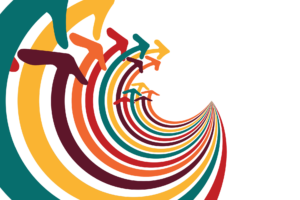Crisis leadership lessons are best exemplified by leaders in real life situations. Ernest Shackleton is among them. He and his crew encountered crisis after crisis, over the two year period from 1914 – 1916, while headed to the South Pole.
Crisis Leadership Lessons – #1
Know when to pivot

Shackleton had a keen ability for responding to constantly changing circumstances and pivoting at the right moment. The crew’s original mission was exploration of the South Pole. As the situation became too dangerous, Shackleton shifted the goal to ensuring every crew member survived.
Knowing if/when to give up the original mission and pivot to a different goal, is a crucial decision that changes the planned course of actions. Sadly, at those critical moments, some leaders succumb to the pressure invoked by Vince Lombardi’s famous statement.
Winners never quit and quitters never win.
Pivoting in the days of Corona Virus
Sometimes the wiser option is to save lives instead of finishing the game.
Steve Silver, head of the NBA, did exactly that. He suspended the season indefinitely after a Utah Jazz player tested positive for Coronavirus. Silver’s decision was rapid, bold and unexpected. He must have seen the risk of public outrage, but he didn’t let it get in the way. Fans and players responded “with utter shock.” The next day a second player tested positive. Silver, like Shackleton, pivoted at the right moment.
Every leader has the opportunity to pivot in the midst of Corona Virus. Will you continue to drive sales as priority one, or will you focus first and foremost on ensuring people’s physical health and psychological well-being? The latter will ultimately serve the former, over time.
When you decide to pivot, write your new goal. We’re more likely to follow through with our written word. It’s why we keep lists.
When meeting with your crew, take actions that support this new goal.
- Ask how each person is doing
- Use the tone of your question and the quality of your listening to encourage candor. Ask what’s challenging for them; how you and the group can help.
- Have the group share tips for staying physically and psychological healthy. How are they building resilience for the long run we expect?
Here’s one that got a lot of re-shares on social media. Feel free to pass it along.
Crisis Leadership Lessons – #2
Put your own oxygen mask on first.
You cannot lead if you succumb to dangers the crisis presents. Take measures to protect your health during the pandemic. Ensure against the secondary danger – emotional turmoil about the crisis. Some degree of anxiety is expected and can be helpful. But too much time spent in anxiety and other negative mental states is both paralyzing and exhausting.
It helps to have a plan. Mine includes daily doses of meditation, art/creativity, and caring connections.
- Meditation focuses the mind on the present moment, a moment in which I am in good health. This, in turn, leads to gratitude. Gratitude is a positive mental state that begets positive actions and snowballs from there.
- Art and creativity sit on the non-logical side of the brain. Worry emerges from the logical side. Worrying narrows our perspective to the object of our worries. That, in turn, leads to other worries. Therefor the reference to racing and/or obsessive thoughts. Not helpful. Shift and broaden your perspective by engaging your creative brain. Listen to beautiful music. Paint. Pour through old photos that bring fond memories. Play piano. Garden.
- Caring Connections fill the heart. A full heart pushes anxiety aside. Bring a bag of groceries to your local food bank. Send a thank you note to someone on the front lines – health care worker, police officer, senator, representative, mayor, governor. Call a friend or relative every day just to check in. These small acts of appreciation create positive mental states and caring connections build resilience.
Crisis Leadership Lessons – # 2.5
Prepare now for the next crisis.
It may sound odd to reference the future in a short list of crisis leadership lessons. But it’s important to learn now because that future will be here soon.
Our brains seek something we can control when so much of the actual crisis is out of our control. It’s why people are hoarding toilet paper. If you want to use your brain for something more constructive, read how Taiwan planned for Covid-19 during the SARS epidemic and how those plans are helping now.
Taiwan has millions of visitors from China and only 45 cases of Covid19 when I wrote this post.
How did they do it?
They started planning in 2004, when SARS struck. Taiwanese officials simultaneously dealt with SARS and began learning how to prepare for the next epidemic. They established a National Health Command Center and integrated different agencies. These two actions alone, allowed Taiwan to track data quickly and stop the spread of Covid 19 faster than other countries.
Find a way to capture learnings as this crisis continues and turn them into plans for the future. Ready. Aim. Fire on all cylinders!
You can read more about Taiwan’s plan here.
“The most important thing about crisis management is to prepare for the next crisis.” Jason Wang, Co-author, Response to COVID-19 in Taiwan, Big Data Analytics, New Technology and Proactive Testing, Journal of American Medical Association


